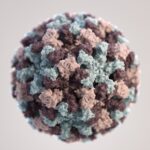
Unlocking the Mystery: Understanding Rheumatoid Arthritis and Its Hidden Triggers is pivotal in comprehending this complex condition. By delving into its intricacies, one can better manage its impacts on health and well-being. Here’s a comprehensive guide breaking down this enigmatic ailment, exploring its triggers, symptoms, treatments, and lifestyle adjustments that can help navigate life with rheumatoid arthritis.
Introduction to Rheumatoid Arthritis
Rheumatoid Arthritis (RA) is an autoimmune disorder primarily affecting joints, leading to inflammation, pain, and eventual joint damage. This chronic condition differs from osteoarthritis, as it’s not just a result of wear and tear but rather an immune system malfunction. The LSI Keywords essential for understanding RA include “immune system malfunction,” “joint inflammation,” and “chronic condition.”
Understanding the Immune System Malfunction
Unlocking the Mystery: Understanding Rheumatoid Arthritis and Its Hidden Triggers requires grasping the immune system’s role. In RA, the immune system mistakenly attacks healthy tissues, particularly the synovium, a membrane lining joints, leading to inflammation. This process damages the synovium, causing pain, swelling, and potential joint deformities.
Signs and Symptoms of Rheumatoid Arthritis
Recognizing RA’s symptoms is crucial for early diagnosis and management. Symptoms encompass joint pain, stiffness, swelling, and fatigue. Additionally, individuals might experience morning stiffness, reduced range of motion, and even systemic effects like fever and weight loss.
Diagnostic Procedures for Rheumatoid Arthritis
Unlocking the Mystery: Understanding Rheumatoid Arthritis and Its Hidden Triggers involves familiarity with diagnostic protocols. Doctors often utilize a combination of physical exams, blood tests checking for specific antibodies like rheumatoid factor (RF) and anti-cyclic citrullinated peptide (anti-CCP), and imaging studies like X-rays and MRI scans to confirm RA.
Effective Treatment Approaches
Treating RA aims to alleviate symptoms, slow disease progression, and preserve joint function. Treatment plans often involve a multidisciplinary approach, including medications like disease-modifying antirheumatic drugs (DMARDs), pain relievers, physical therapy, and sometimes surgery for severe cases.
Lifestyle Modifications for RA Management
Beyond medications, lifestyle adjustments play a pivotal role in managing RA. Exercise, a balanced diet, stress management, and joint protection techniques are integral. Engaging in low-impact exercises like swimming or yoga can enhance joint flexibility and overall well-being.
Impact of Triggers on Rheumatoid Arthritis
Unlocking the Mystery: Understanding Rheumatoid Arthritis and Its Hidden Triggers involves recognizing triggers exacerbating the condition. Factors such as smoking, certain infections, genetics, and hormonal changes might contribute to RA flare-ups.
FAQs about Rheumatoid Arthritis
- What age group is most affected by RA? Rheumatoid Arthritis can develop at any age, but it commonly begins between the ages of 30 and 60.
- Is RA more prevalent in women than men? Yes, statistics show that women are more likely to develop RA than men.
- Can lifestyle changes alleviate RA symptoms? Yes, adopting a healthy lifestyle can help manage symptoms and improve quality of life.
- Is there a cure for Rheumatoid Arthritis? While there’s no definitive cure, various treatments aim to control symptoms and slow the disease progression.
- Can weather affect RA symptoms? Some individuals report increased joint pain or stiffness during cold weather, but research on this topic is ongoing.
- Are there alternative therapies for managing RA? Some people find relief with acupuncture, dietary supplements, or herbal remedies, but it’s essential to consult a healthcare professional before trying alternative therapies.












